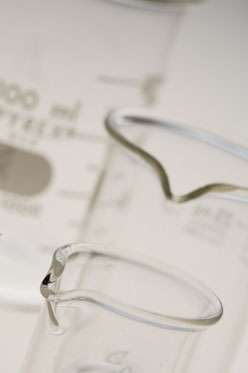The mathematics of chlamydia's spread

(Phys.org) —It sounds an unlikely pairing: using maths to combat the spread of a sexually transmitted disease that can lead to infertility, but a group of mathematicians has delivered a solution that enables health professionals to target resources to help curb the disease.
About 80,000 people are diagnosed with Chlamydia each year in Australia, and a record number of people are being tested for a disease that goes largely undetected until it has caused reproductive damage, said Associate Professor David Wilson, who heads the Surveillance and Evaluation Program for Public Health of the Kirby Institute which researches infection and immunity rates.
"While there was plenty of data the question remained as to how many new Chlamydia infections there are each year," Professor Wilson said.
"We needed to know how many people are contracting it each year, so that we can change national prevention and treatment strategies to priorities resources and planning for the areas where they are most needed."
Professor Wilson brought the problem and various types of data on previous rates of infection among certain age groups to the Mathematics in Industry Study Group (MISG) at QUT last year where more than 100 of Australia and New Zealand's best mathematicians and statisticians gathered to solve the thorniest challenges that government and industry could 'throw' at them.
"The Group gave us an algorithm to estimate new infections which we are using to target the sectors of the community most at risk of contracting the infection," Professor Wilson said.
This year's MISG meeting was opened Prime Minister's Prize for Science 2013 winner, Professor Terry Speed, who has used his statistical wizardry to shed light on everything from cancer research to criminology and hosted by QUT from January 28 to February 1.
MISG director, Associate Professor Troy Farrell, from QUT's Mathematical Sciences School, is an applied mathematician with extensive experience in solving technical problems in industry.
"The MISG is an ideal opportunity to showcase the practical outcomes of maths for improving our everyday lives," Professor Farrell said.
"Academics and researchers challenge themselves to achieve the best possible outcomes in a short amount of time for government, industry and business, so the workshop atmosphere is exciting and vibrant.
"Almost 100 business and industry partners, ranging from large multinational conglomerates to small-to-medium enterprises have sought solutions from MISG since it started in 1984.
"The group has worked on more than 150 different projects spanning sectors including mining, car manufacturing, railways and freight, manufacturing, metal processing, food and beverages, oil and gas, utilities, biomedical science, and technology.
This year mathematicians will work on six projects for a broad range of companies including:
- identifying optimal times for cheese to be in brine
- using seaweed to enhance ethanol production
- designing a better drain for the flow of mining slurries
- designing energy-efficient, all-climate patio doors for export
- determining the complex porous structure of energy materials to enable their more efficient use
- determining vehicle type and occupancy from travel time data to give a real-time picture of the Brisbane road network.
Provided by Queensland University of Technology


















